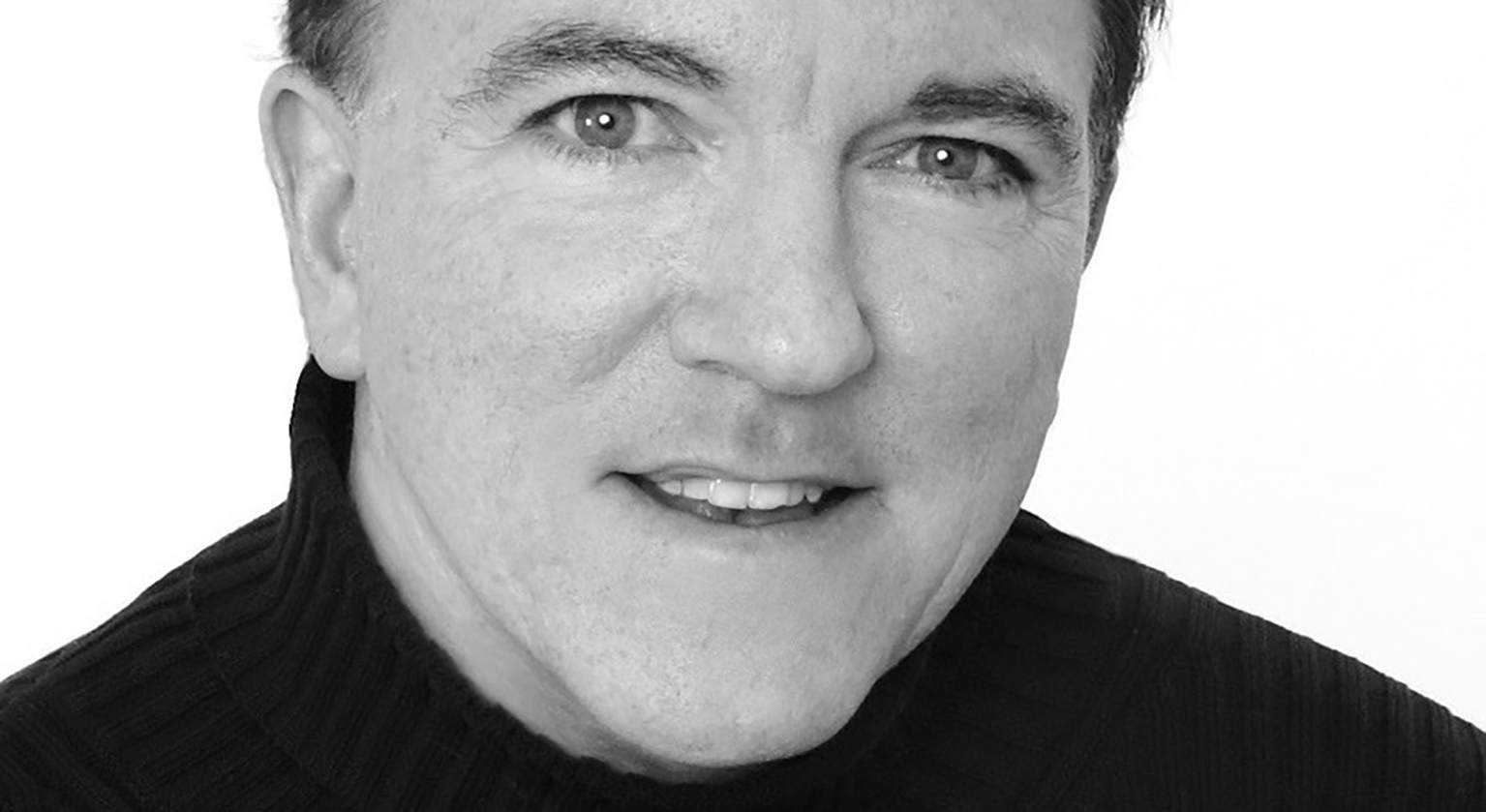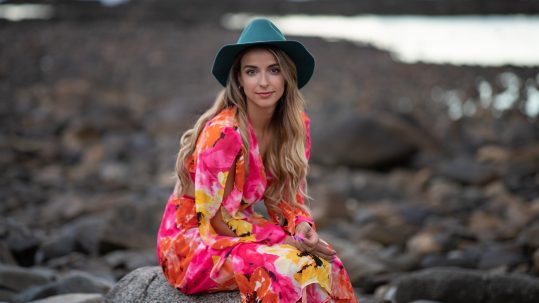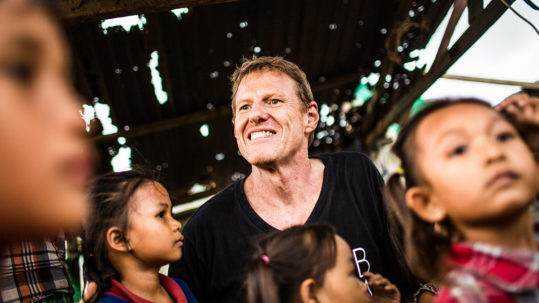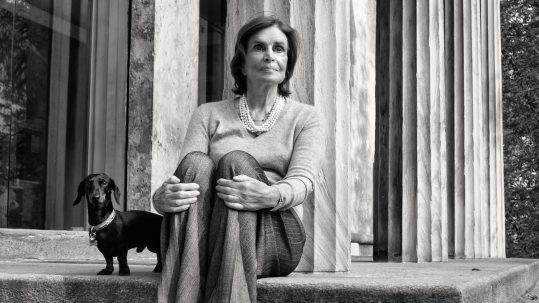
04 Oct Tim Braun
Photo: Karin Kohlberg
TIM BRAUN
Brilliant entrepreneur, family man, focused, with great attention to detail, Tim Braun is one of the most sought-after producers in the business. Working at the highest level with clients such as Anna Wintour, Tommy Hilfiger or Diane Von Furstenberg, Tim Braun demonstrates in the most compelling way that business can be run on trust, with an eye of love and compassion achieving nothing less than wonders. A delightful moment shared in great company.
By Victoria Adelaide | OCT 23. 2017
Victoria Adelaide: You come from a highly artistic and creative family. When did you realize you wanted to become a producer and filmmaker?
Tim Braun: I had a girlfriend when I was in college. She was intern in a newsroom and she told me, “You should try it, it’s really fun”. I did and I realized that I really loved it. It was such an interesting atmosphere; crackling with excitement and there was always something new to learn, which was thrilling. You never knew what the subject matter was going to be and you had to become an expert in it, you had to do the research, to really learn. So, that ignited my passion to work in news and in television. When I graduated from college, it took me two long years to get my first job. I went on more than three hundred interviews and, finally, I was hired at a television news magazine that, at that time, was more or less the most important. There was “60 Minutes” at CBS and “20/20” at ABC. I was hired as a researcher at “20/20”. It was truly a wonderful place to be; it was like going to Oxford or Harvard, where you were learning from and working with people who were at the top of their profession and I really thrived in it.
VA: How did you get started in your current business ‘Braun Production’?
TB: When I left “20/20″, I became an on-air reporter and producer at ABC “Good Morning America”. GMA is one of THE most watched television shows in the United States and, as a result, is sort of the Holy Grail for public relations companies. They all want to get their clients on the show, in front of all those eyes. As a result, PR people call you on a daily basis, pitching their clients. You develop relationships with them; and the relationships you’re developing are at the highest level. My beat was features, which fit me perfectly, and it meant I worked with everyone from the latest authors to chefs like Julia Child, fashion designers including Tommy Hilfiger and Diane Von Furstenberg, top editors at various magazines, entertainers like Aretha Franklin and Ray Charles. When you work with people at that level, it’s all about earning their trust and developing a real relationship. If you’ve built that trust and they feel comfortable with you, they want to continue that relationship. When I started my own company, all those people started calling me to work with them and that’s how my company got started. I was just fortunate to be at the right place at the right time.
VA: Braun Production has been telling stories for 20 years. Stories, it’s about people! Is it your love for people that leads you somehow to tell stories, and do you see yourself as a story teller?
TB: Yes, absolutely. I think my favorite part of my job – that you also said was the favorite part of your job – is doing interviews. It’s really the greatest opportunity, it’s the centerpiece, it’s what makes the whole story come to life. In essence, what I always say to the brands that I work with is that it’s not about your company per se, it’s about the individuals that work there and they all have their own characters that they bring to the mix and that is what your company is about. So allow me to get inside your company so I can get to know each one of them and to tell the story of your company by telling it through the stories of the people who work there. For example, Elle Magazine asked me to do a film on their September issue, focusing on “Personal Style”. What could be more boring? What subject has been more beaten to death? But the three top fashion editors who were there could not have been more different women. So, I said to each of them, “Let me be with you when you get dressed in the morning”. And they did! One of them has a closet where she has a size zero next to a size twelve, she has Prada next to some vintage things, she just loves clothes and even if she can’t wear them, she has to have them. The second editor, who is photographed every week in ‘The New York Times’ for her style, has clothes stacked on wire hangers in her closet, her son steals most of her T-shirts, she’s shaking out the dog’s hair but she puts it on and she is totally chic. And then the third woman is the perfect one. Her name is Nina Garcia, she is very well known as the host of “Project Runway” and has, in fact, just been named Editor in Chief of Elle. Everything in her closet is color coordinated, hanging on matching hangers, all of her Chanel bags are beautifully lined up. It’s just the closet of every fashionable woman’s dreams. The message? If you can see yourself in one of these three women—all completely different, all completely embodying this key message of personal style–then you can see yourself in the pages of Elle.
VA: With evolution and the digital world where it is so easy to do a short video montage for a very cheap price, how did you manage to remain competitive and to renew yourself?
TB: What’s really difficult is that now everybody has a camera and everybody can edit. I consistently have clients who want things done less expensively because there is always a kid out there with a camera who’s willing to do that sort of thing. What I tell them is you can’t put a price on experience. I’ve worked with top correspondents like Barbara Walters and Diane Sawyer, produced commercials for Anna Wintour at Vogue and films for David Remnick at the New Yorker. These are not people who suffer fools gladly. You have be able to stand eye to eye with them and, most importantly, you have to deliver. I’m a grown up. I come prepared and they can confidently ask me to interview anyone from Martha Stewart to a politician to a CEO of a Fortune 500 company. And it’s not just a question of interviewing them, it’s the way the interview will unfold. I go back to the idea about how much I love conducting interviews. An interview is an opportunity to ask anyone virtually anything, because they have agreed to submit themselves to your questions. If you don’t ask smart, thoughtful, provocative, challenging questions then, as far as I’m concerned (and the subject will feel this way as well), you’ve failed. This was a painful lesson I learned early on in my career. People who sit opposite you in a chair really respect you when you come up with things that they may have never thought about in relation to themselves. Sometimes you go out on a limb! When you ask them something nobody never asked them, they get a kick out of that, and it makes for a better conversation. So that’s one of the difficult parts; there’s always someone cheaper and younger. However, they just don’t have the same story telling experience and ability that I do. Everything I do has a beginning, a middle and an end to it. It’s never just something with pounding music, tear sheets, someone in front of a billboard of their company blathering on about why they are great. No, it’s a story, it’s the skill that I learned when I was in ABC, getting inside something and reporting on it. So, what I always say to my clients is – and going back to this idea of trust – you have to allow me in and you have to allow me to illustrate the process. I’m never going to overstay my welcome, I’m going to get in and get out. If I’m in a meeting, I am very sensitive to how busy you are, I only need 5 minutes. If you didn’t do what I needed you to do in 5 minutes, I will tell you what I need you to do and I’ll get out of your way. Also, they come to realize that I’m doing everything for a reason, none of it is willy nilly. I have a real idea of how everything is all going to fit together. I work very hard to tell an engaging and sometimes unexpected story about a brand that will entertain, surprise and even touch the person who is watching it, who isn’t expecting that at all from a marketing film or a branding film; but that’s the nature of the kind of things I do because they’re very sensitively told.
VA: You put your soul in what you do; it is more than just work; isn’t it?
TB: Yes, it’s very personal and I think people feel that. You know, the way I look at what I do is that, to a certain degree, even when it’s about a company, you’re trusting me with your story, so it’s my responsibility to tell it in the best possible, most thoughtful way. It’s pretty evident from the way I am – you don’t really know me, but you’ve got a sense of me – that I’m going to do it to the best of my ability. I take it very seriously and it has to reflect my sensibility, that’s why you hired me. You talked earlier about the need to keep up with things. We live in a Facebook and an Instagram universe, and my specialty for many years was doing a 7 to 10-minute film. The sad fact is that today, almost nobody’s going watch a 7 to 10 minute-film. It doesn’t mean I don’t still do them. For instance, the designer Josie Natori just celebrated 40 years in the fashion business and I produced a 20-minute film for a big Gala screening. However, this 20 minute film was also easily repurposed in :30-:60 second clips to drop on social media focusing on topics like who is the Natori woman? What’s the Natori backstory? And that’s very much become a part of my business, explaining to clients how to repurpose longer films that may be great for their websites to get the biggest bang for their buck and create the most buzz. That’s a very important thing for all of them now. Another major component of my business is media training. I didn’t realize I was doing this for years, starting at “Good Morning America.“ As a producer, I was consistently given authors or artists or models or even designers who had never been on television and my job was to pull their story out of them and find their headline, the most important point to lead with their story. Once you had the headline, I had to discern what are the key points they want to make that support that. Once I had all of this, I had to figure out what are the situations I need to film that illustrate those points? What I was doing was media training. I was teaching people how to get their message across in the most compelling way, and how to make it stick. In today’s world, everybody has to be camera ready. So, clients started asking me to do media training. Tomorrow, for example, I’m working with the designer Alexander Wang to figure out the messaging around his newest collection just before his big fashion show in New York. I’ve worked with the President of Net A Porter, the Editor in Chief of Refinery29, spokesmodels, CEOs, Creative Directors. It’s a really interesting thing because it doesn’t matter whether it’s Tiffany & Company or a millenial startup; they all have to be able to say who they are, who their customer is and what makes them different. It’s that basic, and you tailor it based on who is in front of you. I do media training with 6 or 7 people a month. And that’s how you keep your business going: innovation.
Photos: Courtesy of Tim Braun
VA: What is your ultimate dream for yourself then for your business?
TB: I’m very fortunate to say that I’m essentially living what was once only a dream. Honestly, what I wanted growing up, I more or less have. I have two wonderful girls, they’re twins and they are twelve years old. When I was growing up, if you were gay, it wasn’t a possibility to have children, to have a family, or it seemed very far-fetched. I was very fortunate to have met someone who is an absolutely extraordinary person. I thank God every day for him, and we are together almost 20 years. We have these girls who are lovely, smart, and healthy. We have a beautiful and loving home. In terms of my professional self, it’s sometimes hard, as you said, to keep reinventing yourself, to keep your clients interested, to keep proving yourself. It’s always selling. I would like to have greater consistency but I think that’s true for anyone who has their own company and does anything even similar to what I do; you have to have these ebbs and flows and it’s just the nature of it, but you have to have the confidence to come through those periods and just kind of cool out. ‘The end of August is a quiet time, nobody’s coming out so go enjoy yourself!’ My ultimate dream is also to do documentary and what the subject of that documentary is, I couldn’t tell you right now but that’s something I would enjoy a great deal.
VA: What are you working on right now?
TB: Well, as I said, tomorrow media training with Alexander Wang, who is easily one of the hottest, youngest, most important international designers and next week, Spokesmodels Presley Gerber, son of Cindy Crawford and Sistine Stallone, daughter of Sly. In terms of production, for the past three seasons, I’ve produced a 8-part series on the Best New Menswear Designers in America for GQ Magazine. I am about to go into production for a beauty competition series for Conde Nast, which is the company that owns all major magazines. Unfortunately, I can’t share any more details about that project. So yes, working out some contracts, things are good.
VA: Tim Braun as a kid how was he?
TB: When I was a kid oh my God! What were you like as a kid? (laughing)…as a kid, I was always a very sensitive kid, a very thoughtful kid, I was a dreamer. I liked things that were artistic, I liked to create things, and I know it may sounds a bit corny, but I always liked to do things for the people who were important to me in my life. I think that has continued for me and that’s part of what informs my work, it’s that I have a sensitivity about other people that I had when I was a child.
VA: You told me previously that you have two beautiful daughters, I guess your days off are spent with family?
TB: Yes. It was very hard for us to have these girls and it took us a long time. We had an amazing surrogate but it took almost 4 years to “get pregnant.” And, of course, there were many times over the course of those 4 years and the numerous attempts that he or I would say, “Maybe this is not meant to happen”. But we stayed the course and pulled each other through it—and thank God we did! Because of that, I want every free moment that I have — without smothering them – spending time with them, being involved with them. I think all of that time and love and attention has really paid off, because we have extraordinary girls, who are very grounded, thoughtful, polite, elegant, and smart, not like a lot of kids. And I believe that’s because we really played such a strong role in their upbringing. When I was younger, I spent a lot of time just running around, kissing a lot of frogs, going to a lot of parties, dancing on the tables. When I finally met someone, for me it was such a relief, you know, like enough with all of that. Now, I am very content to spend quality time as a family, whether at home or traveling. We’ve just come back from a terrific holiday in London and Greece.
VA: If you were not doing what you do, what would you do?
TB: I also write. I do love to write, that’s probably what I would have done. I made a couple of… you know when you make an attempt and then you get side tracked, but I used to do it a lot.
...I always liked to do things for the people who were important to me in my life.``








